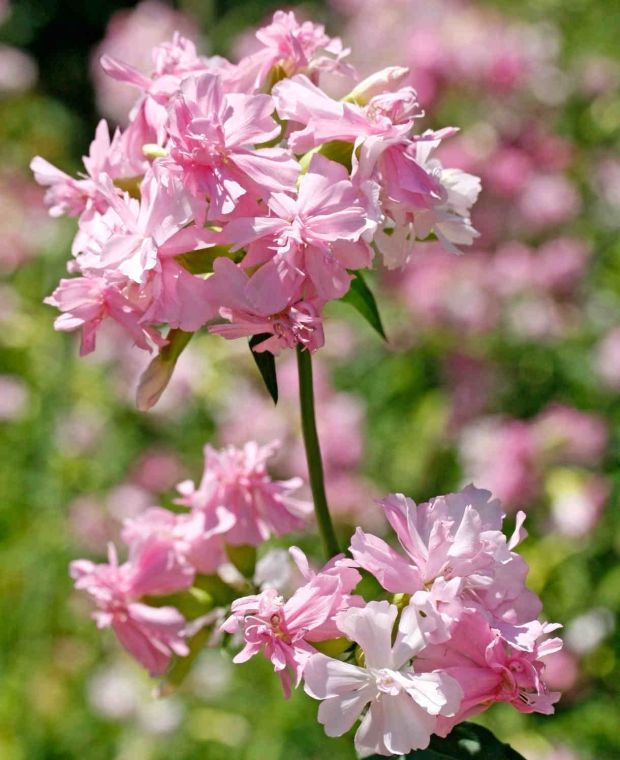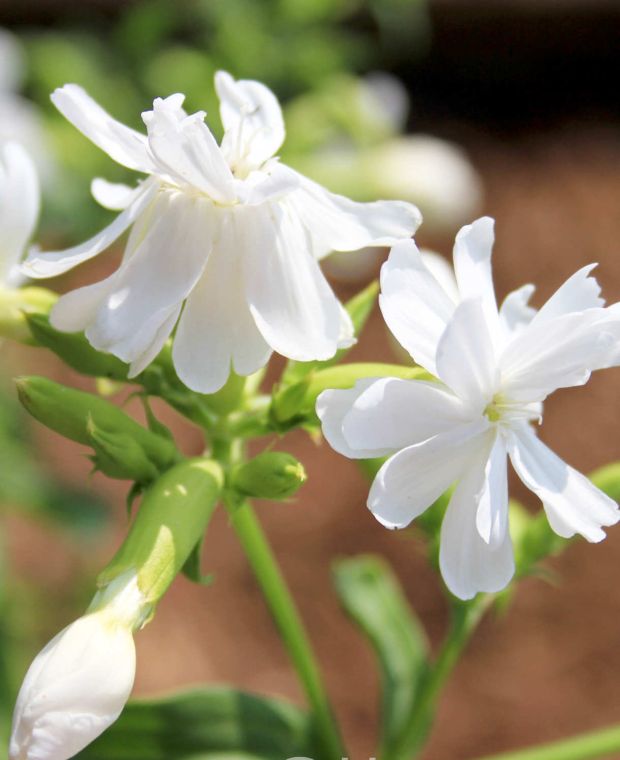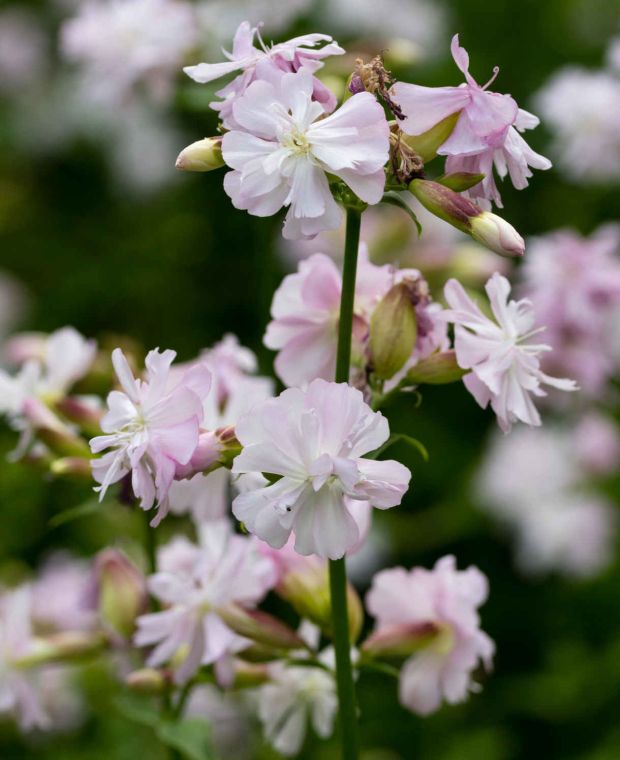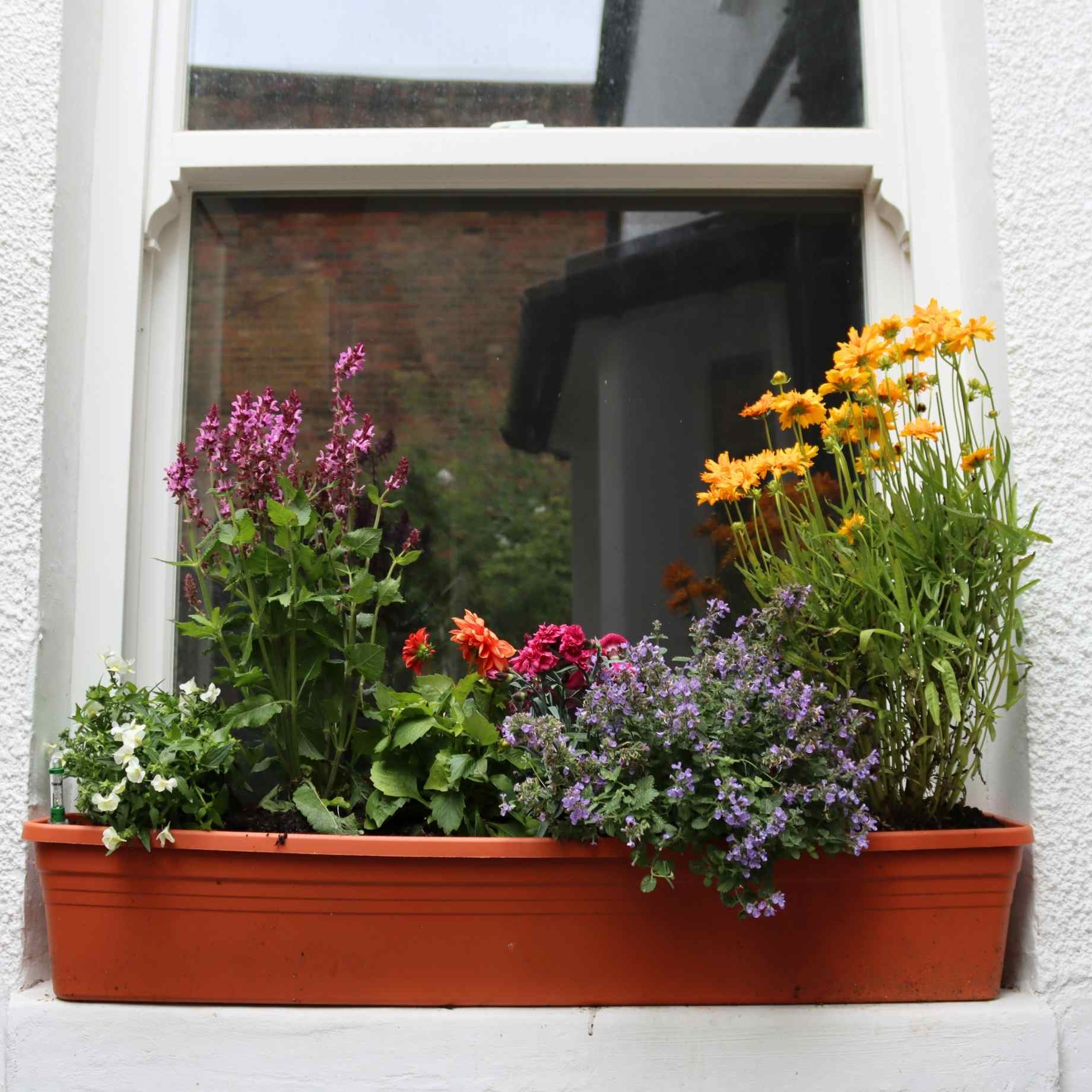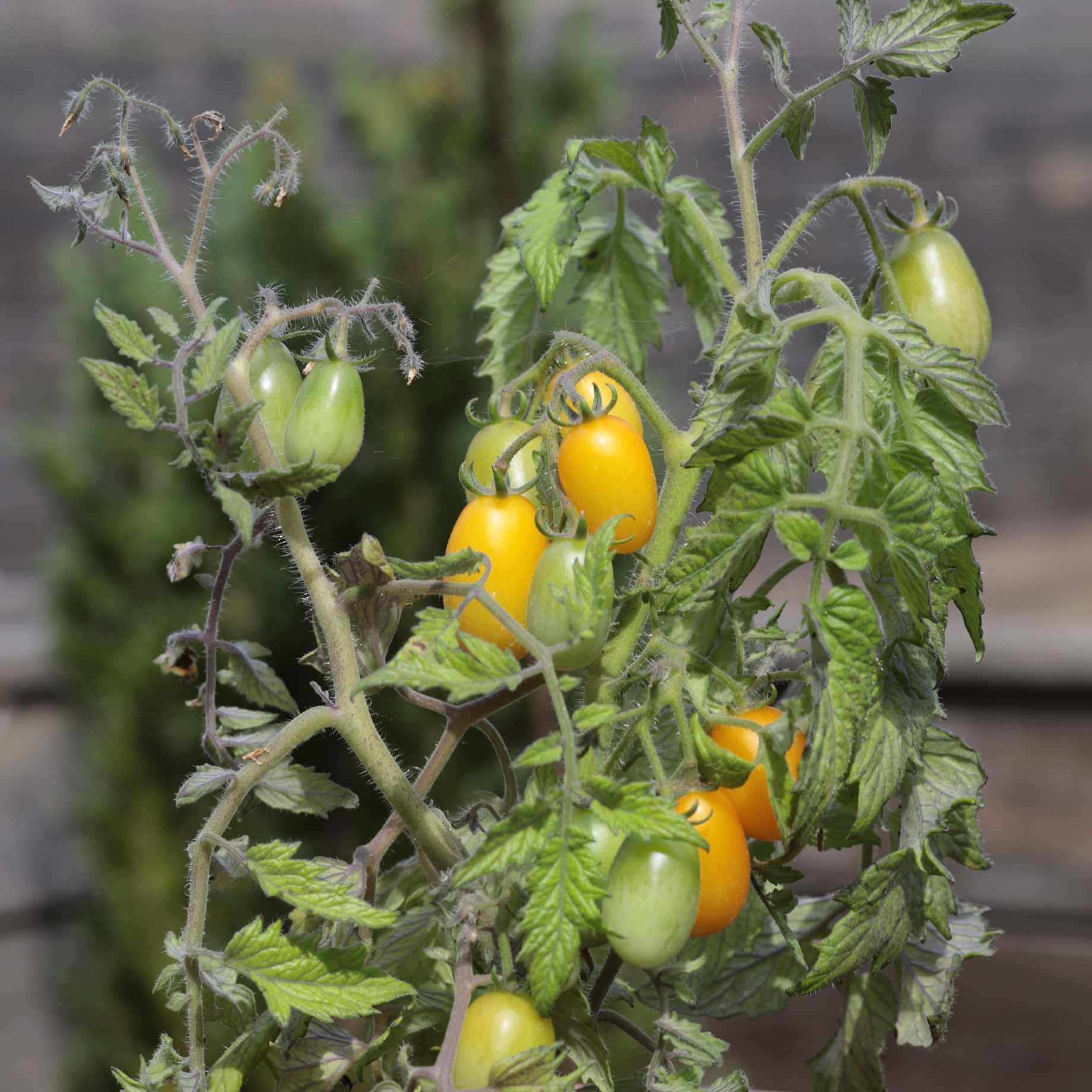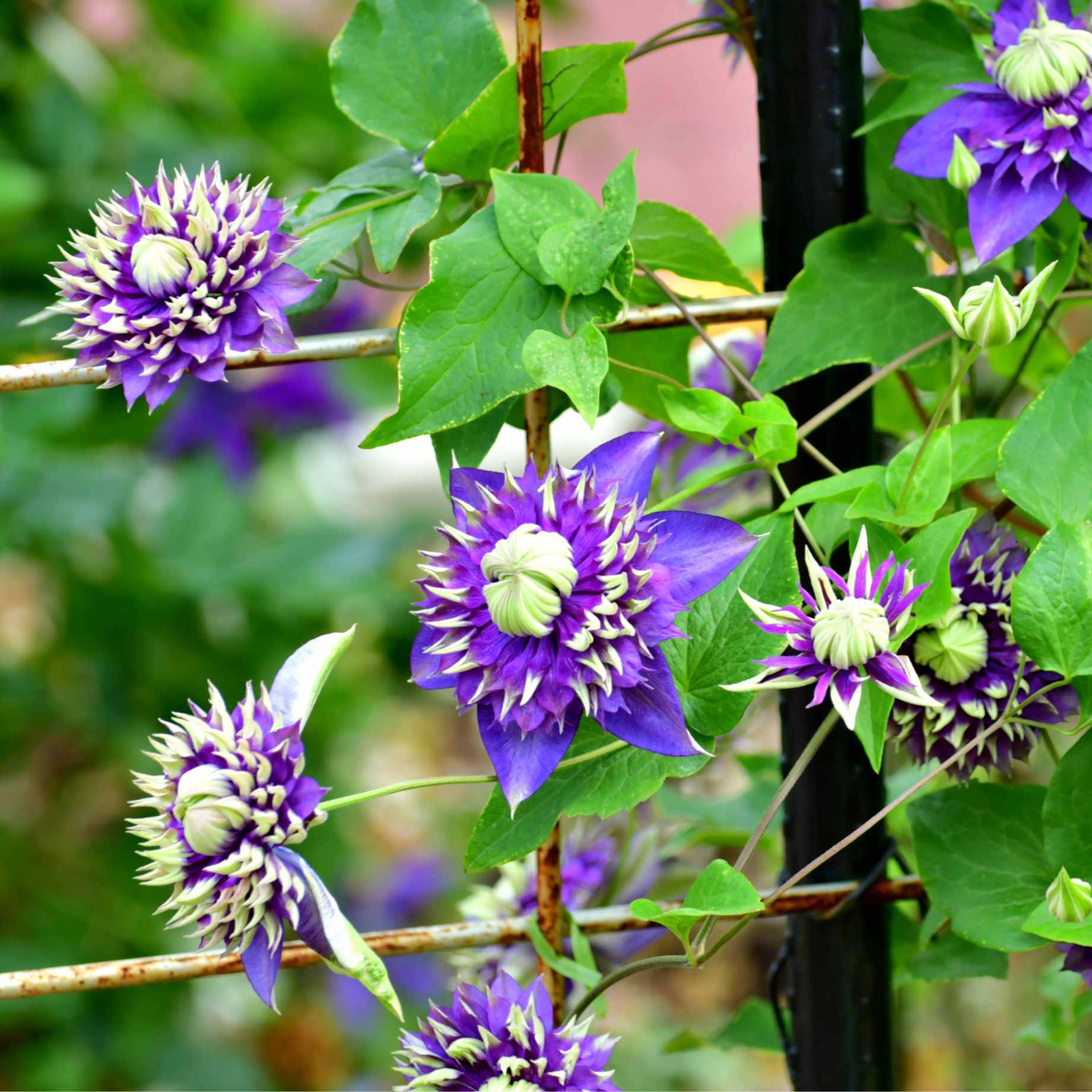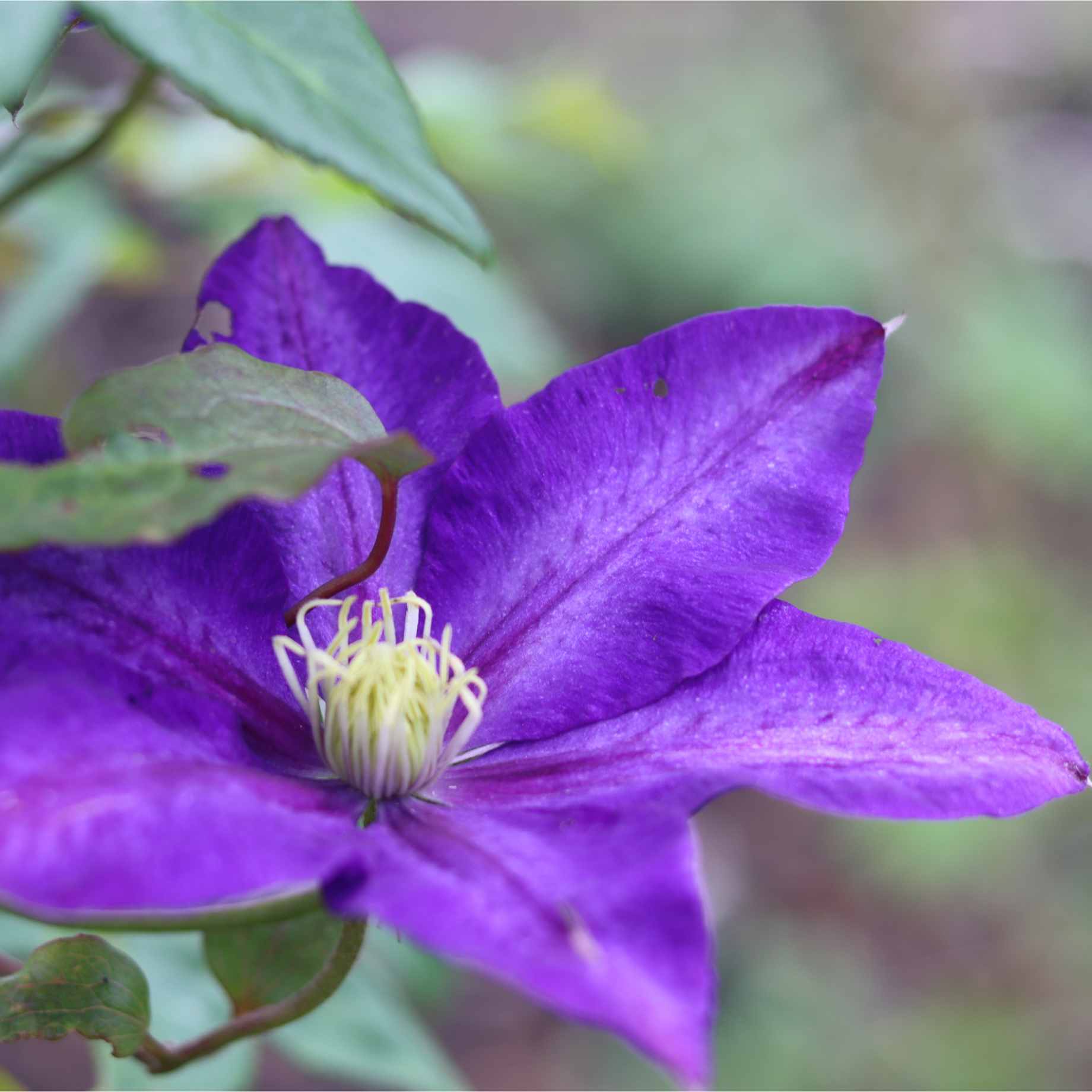Tell Me More…
As with so many native wildflowers Saponaria offincinalis has a host of common names alongside Soapwort. You may know it as bouncing-bet, crow soap, wild sweet William or soapweed – names which are mostly drawn from the plants ability to lather-up when used for cleaning. The plant offers pretty, clump-forming, lance-shaped leaves from March to November – great for filling gaps in the garden. Then, from July to September, sweetly perfumed, open flowers are borne on strong stems, which not only brighten outdoors but make an ideal inclusion in a vase or floral arrangement.Seen throughout Europe, Asia and Siberia growing at low or moderate elevations under hedges and at the sides of the road. Flowers are nectar-rich and robust as well as loved by bees, butterflies or other pollinators. Saponaria officinalis is perfect for wildlife areas as well as containers and rockeries – reaching a height of around 60cm and a spread of 90cm. Prefers well-drained soil in full sun or partial shade and is a hardy, herbaceous perennial tolerant of temperatures as low as -15 C without any need for additional winter protection.
Flower and Foliage Months
Jan
Feb
Mar
Apr
May
Jun
Jul
Aug
Sep
Oct
Nov
Dec
Foliage Month
Flowering Month
Key Information
| Latin Name | Saponaria officinalis 9cm pot |
|---|---|
| Common Name | Soapwort, Bouncing-bet |
| Hardiness | H6 (-15 to -20°C) |
| Colour | Pink |
| Format | 9cm Pots |
| Position | Full-Sun, Part-Shade, Part-Sun |
| Foliage | Deciduous |
| Height in Maturity (m) | 0.60 m |
| Spread in Maturity (m) | 0.90 |
| Soil Conditions | Chalk Loam Sand |
| Soil Acidity | Alkaline Neutral |
| Aspect | East-facing, North-facing, South-facing, West-facing |
| Scented | Yes |
| Good for pots | Yes |
| Good for Rockeries | Yes |
| Good for wildlife | Yes |
| Good for pollinators | Yes |
| Good for cutting | Yes |
| Good for groundcover | Yes |

